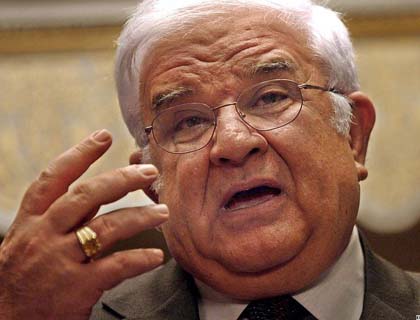ANSF to Cost "$5 Billion A Year" After Pullout
KABUL - A fully fledged Afghan National Security Force (ANSF), including army and police, will cost about $5 billion a year after international combat forces pull out in 2014, defense minister told reporters on Tuesday.
Afghanistan needs more advanced weapons, like fighter jets, to defend against foreign threats, while the current firepower is enough to deal with insurgents, defense minister Abdul Rahim Wardak said.
The United States, as part of an effort to bolster, train and equip the Afghan army, has provided billions of dollars in equipment but has balked at supplying sophisticated technology like fighter planes, arguing that Afghanistan doesn't need such armaments and does not yet have the capacity to maintain them.
Afghan Defense Minister Abdul Rahim Wardak renewed the pitch for the fighters on Tuesday, casting the procurement of heavier weapons as a way of ensuring a regional balance of power.
"What we are asking to acquire is just the ability to defend ourselves, and also to be relevant in the future so that our friends and allies can count on us to participate in peacekeeping and other operations of mutual interest," Wardak told reporters.
The defense minister did not name any potential regional threats. But Pakistan and Iran — both of which have far better equipped arsenals — are widely seen as two neighbors with the potential to influence the country's shaky reconstruction effort and push to crush the stubborn Taliban insurgency.
The Afghan army chief of staff, Gen. Sher Mohammad Karimi, said the army's current level is enough to "bring security and stability to this country," in tandem with the police force and the international forces.
Karimi said that building a strong military was crucial as way of ensuring the balance of power in the region and as "a deterrence for this country against our neighbors."
"But by no means (do) we have a policy of offensive operations," he said. "Our strategy is defensive."
Training the Afghan security forces is a top priority for the U.S.-led international coalition that has been battling the Taliban and affiliated insurgents for the past decade. NATO wants to withdraw its combat forces by the end of 2014 and needs its Afghan counterparts to be ready to assume full security responsibilities by then.
Wardak said about $10 billion has already been allocated by the U.S. to equip and train the country's security forces, including the army and the police. He said another package totaling about $10 billion is being discussed, but must still be approved by U.S. lawmakers.
He said the cost of sustaining the country's security forces in the future largely hinges on the level of violence there.
"If we are able to bring the level of violence down, the sustainment costs will accordingly go down," he said, noting that given the current security situation, that cost could be roughly $5 billion per year. (AP)

